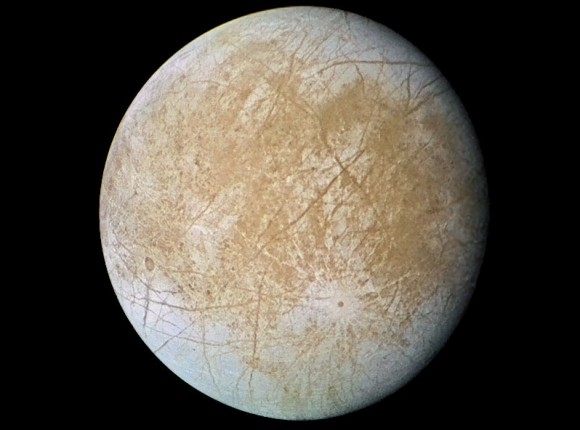Jupiter’s icy moon: Europa. Image Credit: NASA
Europa — a moon of Jupiter first discovered by Galileo — never ceases to surprise and amaze astronomers and amateurs alike.
Last December astronomers announced water plumes erupting 100 miles high from the moon’s icy south pole. It was the best evidence yet that Europa, heated internally by the powerful tidal forces generated by Jupiter’s gravity, has a deep subsurface ocean. It caused the search for life in the outer solar system to take quite a turn.
Now, NASA has issued a Request for Information (RFI) to science and engineering communities for ideas for a mission to the enigmatic moon. Any ideas need to address fundamental questions about the subsurface ocean and the search for life beyond Earth.
“This is an opportunity to hear from those creative teams that have ideas on how we can achieve the most science at minimum cost,” said John Grunsfeld, associate administrator for the NASA Science Mission Directorate, in a press release.




